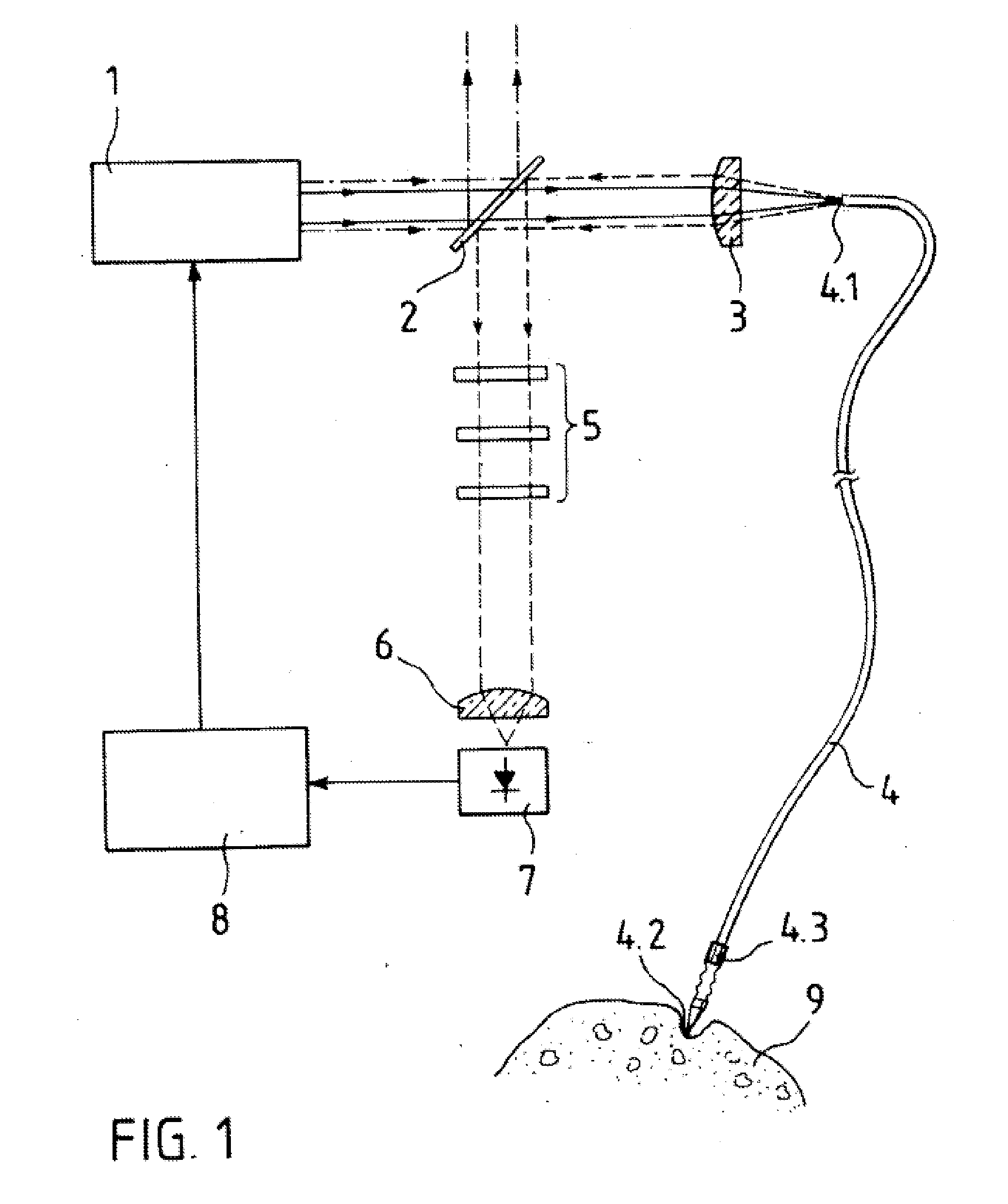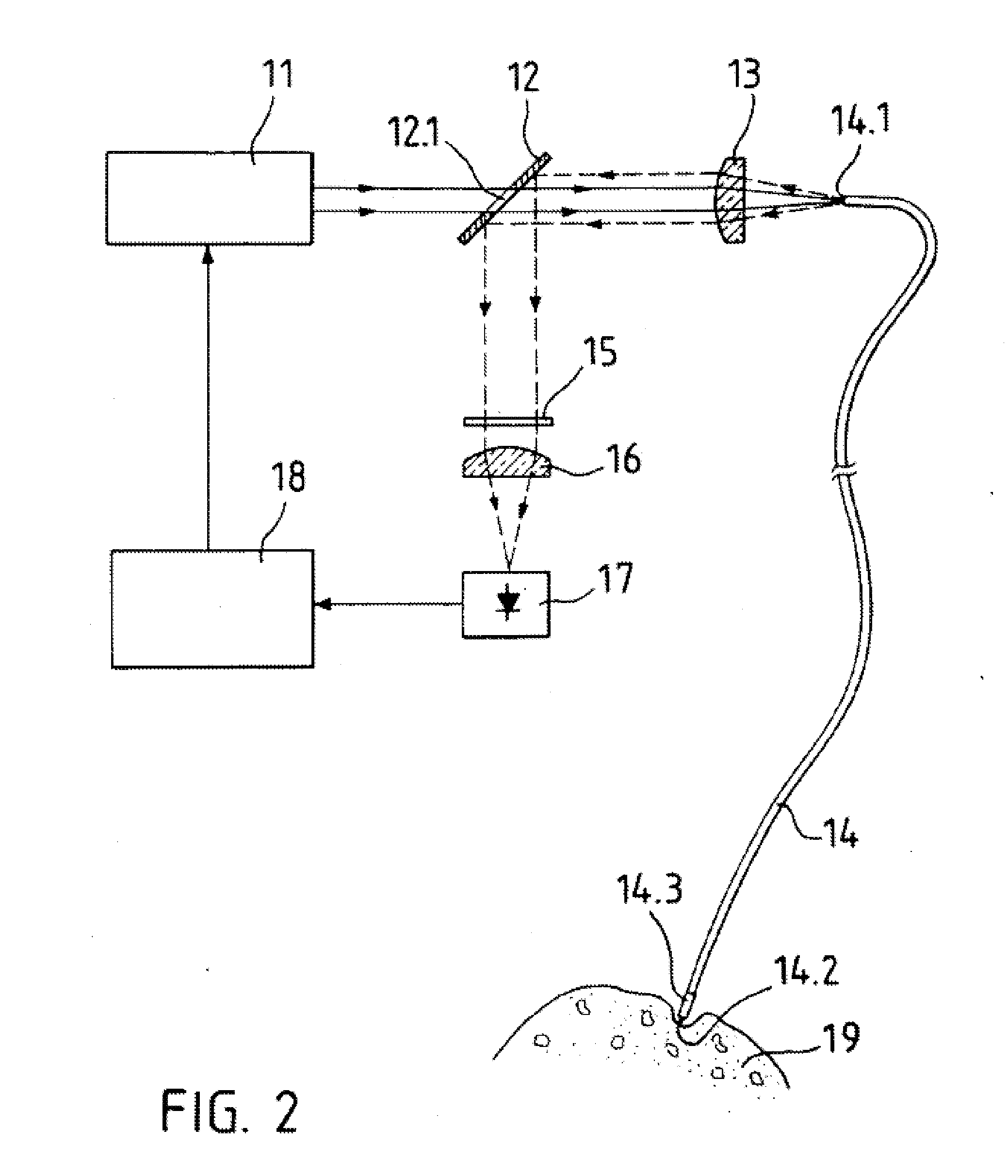Laser-Based Lipolysis
- Summary
- Abstract
- Description
- Claims
- Application Information
AI Technical Summary
Benefits of technology
Problems solved by technology
Method used
Image
Examples
example 1
[0078]A patient is treated to reduce or eliminate excess or unwanted adipose tissue. Tumescent anesthesia is administered to the treatment area prior to the procedure and the device is then used to apply energy to a target region within the body. The device targets electromagnetic energy to the target region which is then converted to thermal energy in the target area. Thermal feedback is generated in response to the application of the laser energy in the form of pyrolytic glowing of biological tissue within the target site, which glowing is then detected by the working end of the optical light guide. As the thermal feedback exceeds or falls below an established target temperature, the delivery of energy to the target site is regulated either up or down to maintain the delivery of thermal energy at a constant level. The continued delivery of thermal energy liquefies the adipose cells and tissue, which liquid fat is then removed by permitting the body's own natural processes. Upon co...
PUM
 Login to View More
Login to View More Abstract
Description
Claims
Application Information
 Login to View More
Login to View More - R&D
- Intellectual Property
- Life Sciences
- Materials
- Tech Scout
- Unparalleled Data Quality
- Higher Quality Content
- 60% Fewer Hallucinations
Browse by: Latest US Patents, China's latest patents, Technical Efficacy Thesaurus, Application Domain, Technology Topic, Popular Technical Reports.
© 2025 PatSnap. All rights reserved.Legal|Privacy policy|Modern Slavery Act Transparency Statement|Sitemap|About US| Contact US: help@patsnap.com



